Chavez Schools: Where Grads Leave Ready to Make a Difference
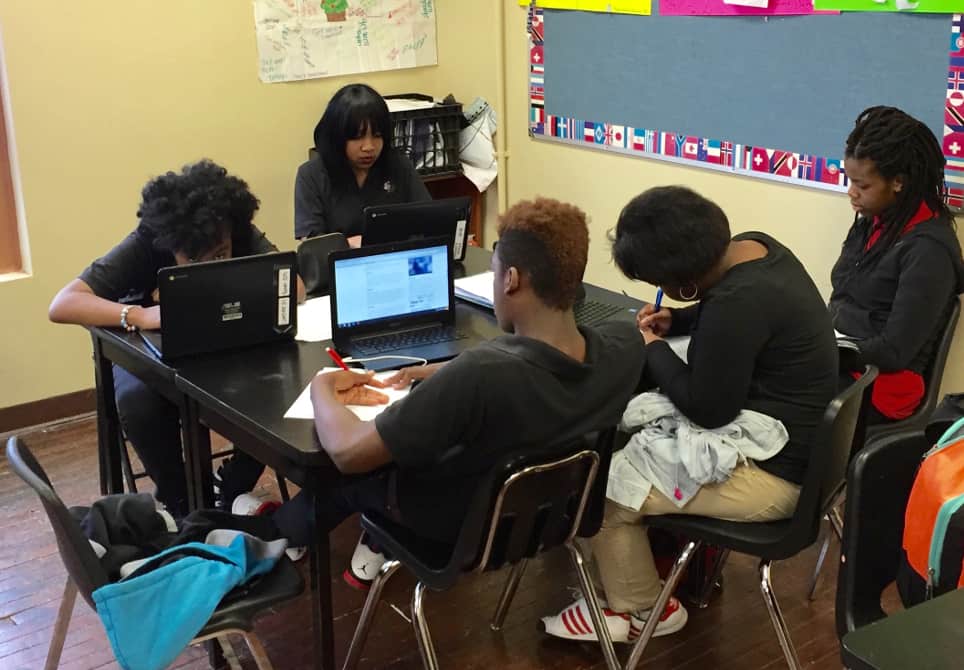
“Teachers care about you and want you to succeed,” said SaDaja Keith, who spent her senior year researching and writing about childhood obesity. Her passion for the topic emerged from her mom’s diabetes. Her thesis advisor, Erik Jones (below, right) helped her construct a research project and thesis that explored the topic and potential public policy solutions.
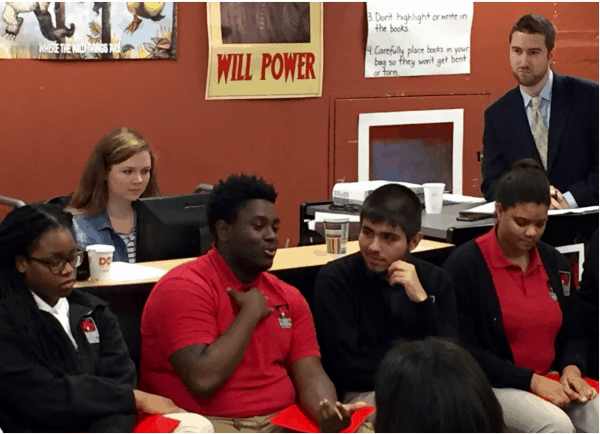
Middle school students at Chavez Schools develop a sense of agency and learn the skills of advocacy. In sixth grade students pick a local issue and present to an authority, like city council, that can address the problem. In seventh grade, they pick a national issue and lobby congress.
Chavez Prep Middle School is housed in the historic Bruce Prep School campus (below) in the historically African American Columbia Heights neighborhood. Charter schools in Washington, D.C. often must locate, rehabilitate and rent facilities despite widespread vacancies in public facilities.
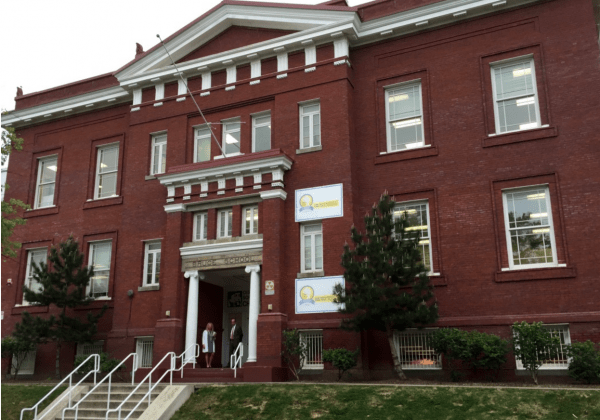
Juniors at the Capitol Hill campus (below) participate in a three week policy internship. SaDaja Keith said her environmental fellowship was life changing. It convinced her she had the ability to make a difference.
Seniors develop a thesis paper and presentation on a public policy issue of interest. Students described the thesis as a challenge but described with enthusiasm the process and finished product. Top scholars present at an annual spring symposium.
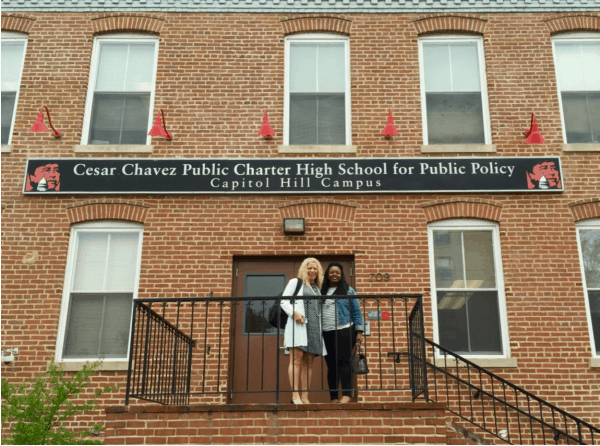
Serving 1,400 students, the Washington, D.C., network of four secondary charter schools was founded 18 years ago by Irasema Salcido, the daughter of immigrant farm workers. Named after civil rights advocate Cesar Chavez, Salcido sought to equip young people with the ability to make a difference in their community. Chavez received a 15 year charter renewal in 2012 after working through several improvement agreements with the District’s charter board (an unusually activist authorizer which has kept charter quality high in D.C. compared to other high penetration cities). Nearly half of D.C. students attend charter schools, with 8,000 more on waiting lists.
After serving as Assistant Superintendent in Hartford Connecticut, Joan Massey served as chief academic officer for innovative secondary networks on both coasts. She joined Chavez as CEO in 2014 (and is pictured in front of both schools above).
Massey wants to prepare Chavez graduates for a project-based world. “Our graduates need the ability to create their own job, to organize a team to develop a solution, to be persuasive and persistent.”
She quickly expanded blended learning opportunities in all four schools. Students access Google apps on Chromebooks. Chavez readers benefit from i-Ready and Lexia.
The focus of the academic program are the three dimensions of college readiness: academic preparation, academic tenacity and college knowledge. Public policy application and authentic assessment develop habits of success. College knowledge is built through tours, AVID curriculum and knowledgeable counselors. All of the graduates gain college acceptance. This year’s class earned over $4 million in scholarships.
School culture is based on citizenship, honesty, achievement, valor, engagement and zest (CHAVEZ). A focus on culture and new alternative learning options resulted in a reduction of suspensions by two-thirds over last year.
Teams of four teachers support each grade level. Each school has three instructional coaches. Chavez curriculum is housed in Rubicon. Progress is monitored by NWEA MAP. College decisions are supported by Naviance. School data is traced by Schoolzilla.
While there are other high schools focused on social justice and leadership, Chavez is among the few with a public policy focus. What better way to engage students in Washington, D.C., than with a focus on policy and advocacy? We think Chavez schools is a great example of genius loci, the spirit of place (#PlaceBased education).
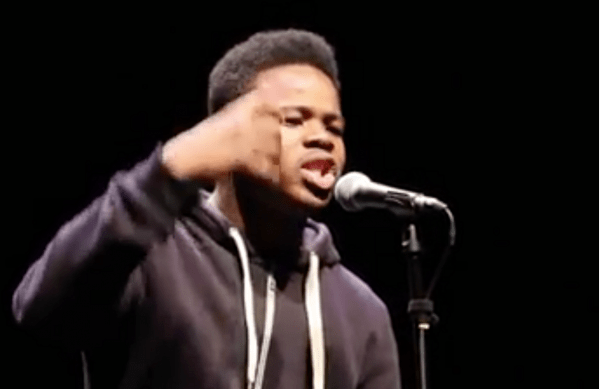
For more, see:
- D.C. Extends Performance Contracting from K-12 to Pre-K, Residential & Adult Ed
- 66 Middle and High Schools Worth Visiting
- 65 Elementary & Middle Schools Worth Visiting
Stay in-the-know with all things EdTech and innovations in learning by signing up to receive the weekly Smart Update. This post includes mentions of a Getting Smart partner. For a full list of partners, affiliate organizations and all other disclosures please see our Partner page.








0 Comments
Leave a Comment
Your email address will not be published. All fields are required.